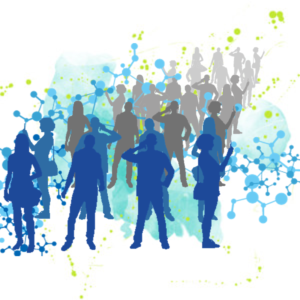Anyone who has done much web surfing has surely come across Wikipedia, a site whose encyclopedic-like entries are created by web users themselves. The results have mostly proven beneficial and accurate. Capturing the collective wisdom of online users has now moved to into a new category — mapmaking [“With Tools on Web, Amateurs Reshape Mapmaking,” by Miguel Helft, New York Times, 27 July 2007].
“On the Web, anyone can be a mapmaker. With the help of simple tools introduced by Internet companies recently, millions of people are trying their hand at cartography, drawing on digital maps and annotating them with text, images, sound and videos. In the process, they are reshaping the world of mapmaking and collectively creating a new kind of atlas that is likely to be both richer and messier than any other. They are also turning the Web into a medium where maps will play a more central role in how information is organized and found.”
Maps have played an enormous role, for both good and ill, throughout the march of history. Peter Schwartz of Global Business Network, for example, is fond of talking about a map that shows California as an island. The map was drawn in 1622 CE and, according to Schwartz, was used by Spanish missionaries, who — carrying their boats across the “island” — discovered the Mojave Desert instead of another beach. Despite the fact that such eyewitnesses testified that California was not an island, the map continued to be reproduced for decades. It took a royal decree to declare California part of the mainland in 1747 — well over a hundred years after the mistake was first made.
In spite of such misuses, maps are useful because they can provide so much information at a glance (e.g., you can determine direction, elevation, available routes, etc.) Effective visualization of information remains an active area of research. That is why the emergence of web cartography is of such interest.
“Already there are maps of biodiesel fueling stations in New England, yarn stores in Illinois and hydrofoils around the world. Many maps depict current events, including the detours around a collapsed Bay Area freeway and the path of two whales that swam up the Sacramento River delta in May. James Lamb of Federal Way, Wash., created an online map to illustrate the spread of graffiti in his town and asked other residents to contribute to it. ‘Any time you can take data and represent it visually, you can start to recognize patterns and see where you need to put resources,’ said Mr. Lamb, whose map now pinpoints, often with photographs, nearly 100 sites that have been vandalized. Increasingly, people will be able to point their favorite mapping service to a specific location and discover many layers of information about it: its hotels and watering holes, its crime statistics and school rankings, its weather and environmental conditions, the recent news events and the history that have shaped it. A good portion of this information is being contributed by ordinary Web users. In aggregate, these maps are similar to Wikipedia, the online encyclopedia, in that they reflect the collective knowledge of millions of contributors.”
The aggregation of information is useful only when it can be used to enlighten — to produce what some call actionable intelligence. Just like the map that pinpoints graffiti, aggregated information that can be effectively visualized produces patterns upon which people can act. Maps are great because they can be easily manipulated to provide actionable intelligence. Weather maps on the web, for example, that show live radar feeds often have buttons that permit the user to layer in roads and/or rivers — good information for travelers or sportsmen. The wiki maps being created on the web are significant because they are supplying a much richer view of the globe as seen by local residents.
“This fast-growing GeoWeb, as industry insiders call it, is in part a byproduct of the Internet search wars involving Google, Microsoft, Yahoo and others. In the race to popularize their map services — and dominate the potentially lucrative market for local advertising on maps — these companies have created the tools that are allowing people with minimal technical skills to do what only professional mapmakers were able to do before. ‘It is a revolution,’ said Matthew H. Edney, director of the History of Cartography Project at the University of Wisconsin in Madison. ‘Now with all sorts of really very accessible, very straightforward tools, anybody can make maps. They can select data, they can add data, they can communicate it with others. It truly has moved the power of map production into a completely new arena.’ Online maps have provided driving directions and helped Web users find businesses for years. But the Web mapping revolution began in earnest two years ago, when leading Internet companies first allowed programmers to merge their maps with data from outside sources to make ‘mash-ups.’ Since then, for example, more than 50,000 programmers have used Google Maps to create mash-ups for things like apartment rentals in San Francisco and the paths of airplanes in flight.”
This “map craze” joins other uses of Web 2.0 (the “mash up” web) to make socialization easier and the information available richer.
“In April, Google unveiled a service called My Maps that makes it easy for users to create customized maps. Since then, users of the service have created more than four million maps of everything from where to find good cheap food in New York to summer festivals in Europe. More than a million maps have been created with a service from Microsoft called Collections, and 40,000 with tools from Platial, a technology start-up. MotionBased, a Web site owned by Garmin, the navigation device maker, lets users upload data they record on the move with a Global Positioning System receiver. It has amassed more than 1.3 million maps of hikes, runs, mountain bike rides and other adventures. On the Flickr photo-sharing service owned by Yahoo, users have ‘geotagged’ more than 25 million pictures, providing location data that allows them to be viewed on a map or through 3-D visualization software like Google Earth. The maps sketched by this new generation of cartographers range from the useful to the fanciful and from the simple to the elaborate. Their accuracy, as with much that is on the Web, cannot be taken for granted.”
Helft points out that in a world with GPS the accuracy of maps shouldn’t be a problem — but it is. Not every amateur cartographer has or uses GPS. Maps created using GPS, however, can be more accurate than some maps currently available but which were developed years ago. Helft also reports that more changes are coming.
“Until recently, most Web maps were separate islands that could be viewed only one at a time and were sometimes hard to find. But Google and Microsoft have developed tools that make it possible for multiple layers of data to be viewed on a single map. And Google is working to make it easier to search through all online maps. Now, a tourist heading to, say, Maui can find the hotels and restaurants on the island and display them on a map that also superimposes photos from Flickr and users’ reviews of various beaches. The same information is quickly moving from two-dimensional to three-dimensional renderings. Microsoft, for example, has created 3-D models of 100 cities worldwide and aims to have 500 models in the next year. … For the Internet search companies, these efforts are part of a race to capture the expected advertising bonanza that will come as users browse through these maps in search of businesses and services. In the process, they are creating technologies whose impact could be similar to those of desktop publishing software, which turned millions of computer users into publishers.”
Helft’s story concludes with a discussion of a project that hopes to map New Orleans’ reconstruction. In the past, NGOs have used mapping technology to help define minefields so that they can be avoided and eventually cleared. Unfortunately, their maps have had limited distribution. This new web mapping technology could make such maps much more widely available and, hopefully, save lives and injuries. There are probably no bounds to how this technology can be used to help foster and track development. It will be interesting to watch. A new reader of this blog, W David Stephenson, posted a blog of his own this subject — check it out.




